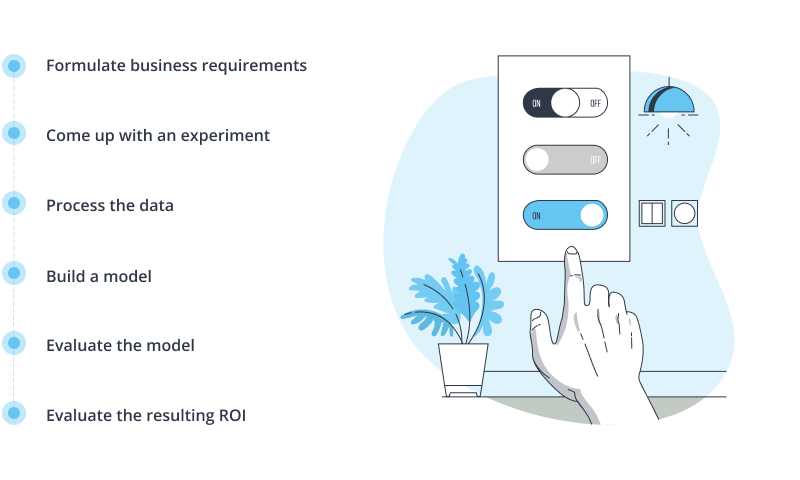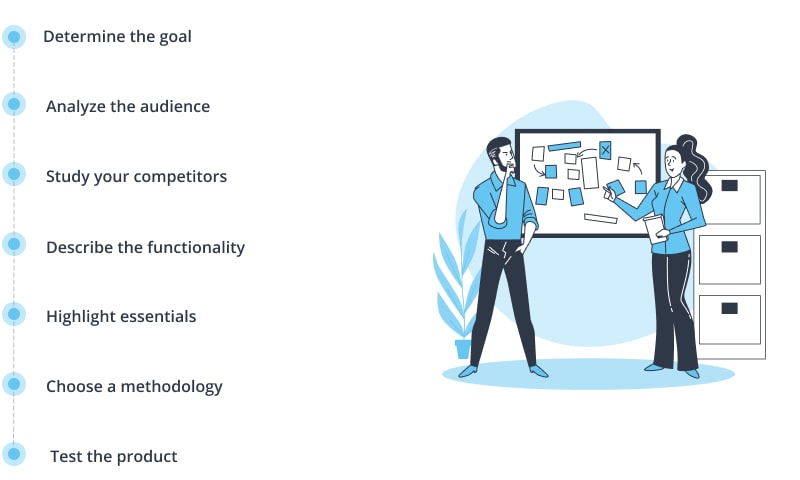What You Need to Know Before Developing mHealth Apps

IT copywriter
Reading time: 12 minutes
mHealth, or mobile health, is the integration of mobile digital technology into health care. This technology connects patients and healthcare professionals, without requiring patients to come to a medical institution. Mobile health solutions allow users to monitor sports and health information, schedule treatment, consult healthcare providers, and help people monitor the course of chronic diseases in mobile apps for health control. According to the survey of Health IT Outcomes, 74% of hospitals that use mobile technology for treatment perform better than those that do not.
The mHealth market is filled with different types of products: special apps for health monitoring, online consultations, storing health data, patient monitoring, reminders, following a healthy lifestyle, etc. Statista experts claim that the market size in 2020 was about $60 billion. We know that you can create a truly valuable and popular mHealth product. In this article, we will walk you through the most important aspects of this process.
Working on a mobile health application
Before developing a medical app, you need to come up with an idea and decide on your goals. Then you can plunge into the app development process, but don’t rush things because you need to understand the details of this process. Later, when you’re confident in the contractor and the platform, you will have a choice between a PoC and an MVP. Luckily for you, we’ll talk all about these aspects below.
Find a contractor and set a task
There can be a significant development price variation in the market and even within one company. This variation depends on multiple factors:
- the scope of work;
- whether the company have a better experience in a specific area than others;
- whether there is a ready-made solution, or you need to start from scratch;
- how tight the deadlines are;
- what technologies are used.
Therefore, it is crucial to contact multiple app developers, understand their way of working on projects, and choose the option that suits you best.
Before starting a digital health project, IT companies produce a pre-estimate for the software development project based on your initial requirements. It’s like buying mobile phones: you need a specific design, storage capacity, and camera resolution. However, startups are a little more complicated: all requirements need to be documented and agreed upon to have a good idea of how the final product should look. If the estimate suits the client, then developers need to carry out a full requirements clarification. At this stage, the client receives a contract with a detailed description of the work and its result, and developers get an exact understanding of what they have to create.
Choose a methodology
To work on a project, you can use the Waterfall or Agile methodology. However, application developers usually combine them and use a hybrid framework that has the advantages of both. Waterfall implies consistent work: you will start a new stage of development only after completing the previous one. The advantage of this methodology is a fixed price since you define every detail in advance and you know where the budget is going. You can face some difficulties if you need to significantly deviate from the originally planned course, for example, when requirements or risks change.
The Agile family of methodologies is much more adaptive, and you have more flexibility to stray from the original plan in the process. In agile methodologies like Scrum or Lean, the core values are people, changes, and a working product (not the completeness of documentation). There are other development rules: the main phases are cyclically repeated one after the other. To learn more about various methodologies, read our article.
Decide on a platform
If you decide to create native health apps, then the development company will use the languages accepted by the targeted platform: Swift for iOS or Java for Android. Their advantage is that they can interact with other services of the device, be it geolocation, microphone, or media files.
Otherwise, you will need to adapt the product to different platforms. Typically, developers use HTML, CSS, and JavaScript to create such cross-platform mHealth applications. Their advantage is the adaptability to different types of mobile devices. In other words, you don’t have to create a separate product for both owners of iPhones and Android-driven mobiles.
Here are the main features of these two types of mHealth apps:
| Native mHealth apps | Cross-platform mHealth apps | |
| Independency | Work great on different platforms, but you need to develop a separate product for each | You can use one program on different platforms, but it must contain pieces of code for each platform |
| Limitations | A native app gets access to all services of the device | A cross-platform app is limited by the framework capabilities |
| Support | If the app is written for two platforms, then it takes twice as much work to support it | One specialist can handle cross-platform app support |
| Design | Has all the tools to create a convenient user interface | Frameworks will help imitate the native interface, but it is hard to achieve the original similarity |
| User experience | Standard look of apps and high performance | Apps can be slow, and a single design for different platforms can isolate some users and make them feel uncomfortable |
When choosing the type of app to develop, you must determine your audience, the required features, and the capabilities of the contractors.
MVP or PoC?
Before launching a full-fledged startup, in our case health app, you need to test its viability. To do this, should you check an idea or create a basic version? Let’s learn more about our options.
A Proof of Concept, or PoC, is a visual justification that your idea works. For this, you need a prototype, a sample, or a model of the final product. You need a PoC to confirm or disprove your hypothesis and evaluate its effectiveness.
Work on PoC includes the following stages:
If you are unsure of the feasibility of your idea but want to conduct the market research and explore your capabilities at low development costs, PoC could help you assess the viability of a model or prototype. Then you can start full-fledged application development with a clear understanding of your opportunities.
Another good way to test the public’s reaction to a health care app is to develop a minimum viable product or MVP. Investopedia experts claim that 42% of failed startups close due to lack of demand. Many startups could have avoided this by launching a basic version of the product on the market with minimal functionality. It saves money, energy, and nerves, even if the MVP is not successful.
The MVP development process looks like this:
If you pay attention to the users’ needs, focus more on the main functions of the product, and avoid excessive perfectionism, then the result will be fast and satisfying. Read more about MVPs in our article.
Details of mHealth apps development
We like to work on projects that benefit people, so we’re happy to say that we develop mobile medical products. However, despite how rewarding the work is, this is not always easy. We will tell you what difficulties you may face while working on mobile apps in health area so you will be fully prepared before creating a project.
API and integrations
Modern mobile applications have become more feature-rich. In the same app, users can chat with each other, listen to music, order a taxi, and buy clothes. Health apps are no exception since customers need convenient and versatile features. In addition, mobile medicine is closely related to health monitoring. Consider how you might integrate your mHealth apps with wearable gadgets to make your product even more useful.
Data privacy
This is one of the key issues of concern to modern users of mobile apps. It is imperative that health care app is not only protected from security issues but also complies with all the rules of modern legislation. For example, if you are developing health apps in the USA, you will need certifications from the Health Insurance Portability and Accountability Act (HIPAA). In Europe, a medical care app must be compliant with the General Data Protection Regulation (GDPR). Besides, all information about patients should also be transmitted only over encrypted channels. The message here is to make sure your contractors follow certain standards and keep up with the latest personal data encryption requirements.
Interface
Data security isn’t everything. Users want the health apps to be convenient. Work on the design so that it is clear and pleasant for clients who wish to receive telemedicine services. For example, our Excelicare platform has broad opportunities for customization. If clinical care providers launch the app, it shows the brand elements of the clinic where they work along with its functions. Patients see the customer interface. Users establish productive contact, regardless of the device used. This contributes to the development of health care and the maintenance of the health of clients. Health apps’ clients can receive timely medical care of good quality.
Cross-platform use
If you want to reach a large audience, consider the interests of users of different mobile and medical devices. If you make an app for both iOS and Android platforms, your customers can use it seamlessly and remain loyal to you. For instance, our app MobaNode is a platform for user feedback. It has a complex architecture. It consists of several versions of the app for various platforms (Android and iOS) and a web portal for the client written on PHP. The backend part is integrated with the client’s partner organizations. The value of the solution is the ability to exchange valuable personal health information, thus improving patient care. The platform can also be used to monitor insurance policy, maintain health records, create preventive recommendations, and use alternative approaches to healthcare.
The development of a new mobile app, especially if it is a medical one, involves multiple serious considerations. If you want to make a complete and useful mobile health product out of your idea, we will gladly use our experience to bring your project to life. Drop us a line at medtech@azoft.com. We would love to work with you.




Comments